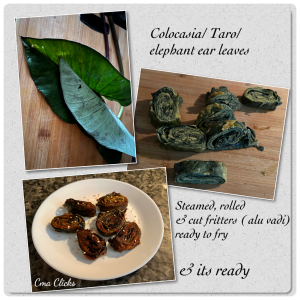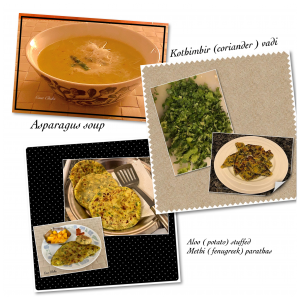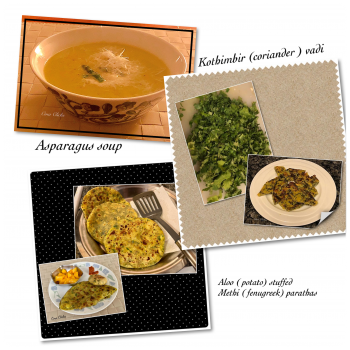When the green woods laugh with the voice of joy, And the dimpling stream runs laughing by; When the air does laugh with our merry wit, And the green hill laughs with the noise of it.” – William Blake
Spring has sprung! And with it, the chirping of birds in the mornings, the sprouts on the trees, and the sun rising a few minutes earlier every day and moving towards the North. There is a paradigm shift in the whole atmosphere; suddenly everything seems to be coming up alive, waking from the winter slumber.
This time in the Hindu calendar, is usually “Chaitra” a lunar month and the start of our new year – “Gudi Padva”, as we Maharashtrians call it. This is a time when many people from other states celebrate their new year too. It is the beginning of the new season. Another thing that comes to mind thinking about the start of the new year is eating neem leaves on the first day of the new year. I must tell you, neem is known for its medicinal purposes, but the leaves tasted so bitter. Looking back, I like how traditions were made since eating of these leaves gave immunity. Again, probably making us aware of all tastes in our life, the bitter, sweet, sour, astringent. The tender leaves were mixed with jaggery, for its sweet taste, made into a chutney and relished. Of course, one can eat neem leaves all year round, but eating that day averts the seasonal sickness and keeps our health in check.
So, carrying on with leaves and the greens that the spring brings, it was time to touch base with the greens in our cuisine: the coriander bunches that I have found here, then the fenugreek leaves, then the asparagus is finding its way into our kitchen too; and finally finding some colocasia leaves here which we called “Alu.” I was so excited about it. It’s been years since I have cooked with them. So, made my favourite “aluvadi,” that is colocasia fritters. The process is indeed long: first cleaning those leaves, wiping them, and then spreading the chickpea mixture onto the leaves one by one, layering one over another, and then roll it, steam it, fry it. The mixture is made with chickpea flour, turmeric, chili, coriander and cumin powders, salt as per taste, some rice flour to get the crunch and this is mixed with tamarind water and jaggery. One can add garlic, peanuts to the mixture too. Our cooking has always had some logic to use certain spices or ingredients with each vegetable or lentil. For example, these taro leaves could cause itchiness in the throat, so to counter that, sour ingredients like tamarind or lime were rubbed or added to it. This also imparted a tangy flavour to the dish, which is balanced with chili, jaggery or garlic. These words have remained with me since the first time I had tried cooking the leaves – so, aptly said by, Laurie Colwin, American novelist, food column writer
“No one who cooks, cooks alone. Even at her most solitary, a cook in the kitchen is surrounded by generations of cooks past, the advice and menus of cooks present, the wisdom of cookbook writers.”
While the coriander leaves usually are used as garnishes, we have ample dishes that we make using the leaves as the base. The chutney sandwiches that I mentioned last time uses the coriander leaves. Meanwhile if you chop them finely and use them with a lentil mix, fermented a little, steamed and later tempered, we have a nice plateful of “Kothimbir vadi” (coriander fritters/ snack).
Then, adding fennel seeds to the tempering and other spices ended up making a nice veggie with chickpea flour. Just enjoyed these different dishes of coriander.
Having got the fenugreek leaves, this time experimented making “kachoris” (fried stuffed lentil /vegetable dough ball snacks). I used the chopped leaves, carom seeds, salt, turmeric and flour to make the dough, the outer covering/coating. The stuffing was made with boiled mashed potatoes, sauteed in oil with cumin seeds, ginger and green chili (ground), some garam masala and salt. I also rolled them into parathas which started off on a spicy foodie morning. 
And for those rainy evenings made the “methi gotas”, the fried fenugreek chickpea fritters.
As with spring, nature loves to play truant and then after some warm days we get some snow and a real cold spell. Takatalvi isn’t it? That’s the time the asparagus soup was enjoyed the most along with the coriander soup. The time when one wants something warm but not too heavy to finish off our meals.
“For still there are so many things that I have never seen: in every wood in every spring there is a different green.” – J. R. R. Tolkien




